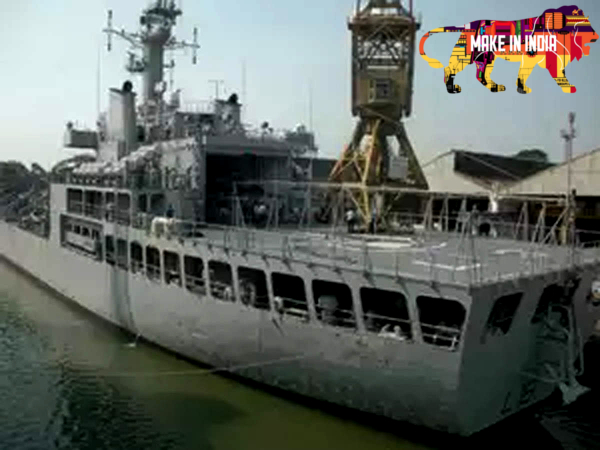India is all set to build its first deep sea, hi-tech research vessel at a cost of about ₹ 1,200 crore for purposes including exploration and it would also be used for efforts aimed at securing for the nation its rightful additional continental shelf, a top official said today.
It is the first time that such a deep sea vessel, with advanced capabilities like a feature to send seismic signals into deep ocean depths would be built in India.
The new ship, under the Make in India initiative and the Deep Ocean Mission, is expected to be completed by three years from the date of placing the order, he said.
The ship building yard is yet to be finalised but it is expected to be done by next March, Secretary, Ministry of Earth Sciences, M Ravichandran said on board ORV (Ocean Research Vessel) Sagar Nidhi.
Union Minister of State, Science and Technology, Jitendra Singh on Saturday sailed in Sagar Nidhi from Chennai Port and interacted with scientists on various projects. On Friday, he launched India’s first manned ocean mission ‘Samudrayan.’
Sagar Nidhi is a premier research vessel of the National Institute of Ocean Technology.
The new vessel is for purposes including survey and exploration of resources, oceanography and would feature radar, seismic components as well and it could study characteristics of the sea bed.
“We have got approval. We have to initiate now. We have made a design,” the official said.
An important aspect of the proposed vessel is that its seismic components could send seismic signals to understand the properties of rocks, soil, the overall seabed that would help ascertain presence of minerals, oil, hydrothermal vents and so on, the official said.
The seismic sensors or equipment may, however, have to be imported, and the utility of the radar includes forecast for cyclones.
The proposed new ship, which would cost about ₹ 1000 to ₹ 1,200 crore, is also a replacement for the 38-year-old vessel ORV Sagar Kanya.
The central government had approved the deep ocean mission to be implemented by the Ministry of Earth Sciences at a total budget of ₹ 4,077 crore for 5 years.
Mr Ravichandran said that India’s continental shelf now extends to 200 nautical miles and to claim beyond that, sediment thickness of about a kilometer (depth) to validate its Indian inland origin has to be established according to the United Nations convention.
Seismic signalling in the proposed ship, to be inbuilt in the hull, would help establish the sediment extension from Indian inland region, he added.
“Now we are trying to establish sediment thickness beyond the 200 nautical miles. We want to prove that sediments has gone from India (including the Himalayas) and that it (indication of seabed/submarine areas) belongs to India,” he said.
In the west, “we have already claimed roughly an area corresponding to the size of Maharashtra and Madhya Pradesh.”
The Territorial Waters, Continental Shelf, Exclusive Economic Zone and Other Maritime Zones Act, 1976 says “India has, and always had, full and exclusive sovereign rights in respect of its continental shelf.”
According to the Act, the continental shelf of India comprises the seabed and subsoil of the submarine areas that extend beyond the limit of its territorial waters throughout the natural prolongation of its land territory to the outer edge of the continental margin or to a distance of 200 nautical miles from the baseline.
Source: NDTV
You may also like
-
New Heat-Based Approach To Cancer Treatment Can Reduce Chemotherapy Doses
-
Scientists Take A Major Step Towards Unification Of Classical & Quantum Gravity
-
India Graphene Engineering and Innovation Centre (IGEIC) Under the Vision of Viksit Bharat@2047 Launched
-
New High-Performance Gas Sensor can Monitor Low Level Nitrogen Oxides Pollution
-
Antidepressant Drug can be Repurposed for Treating Breast Cancer
